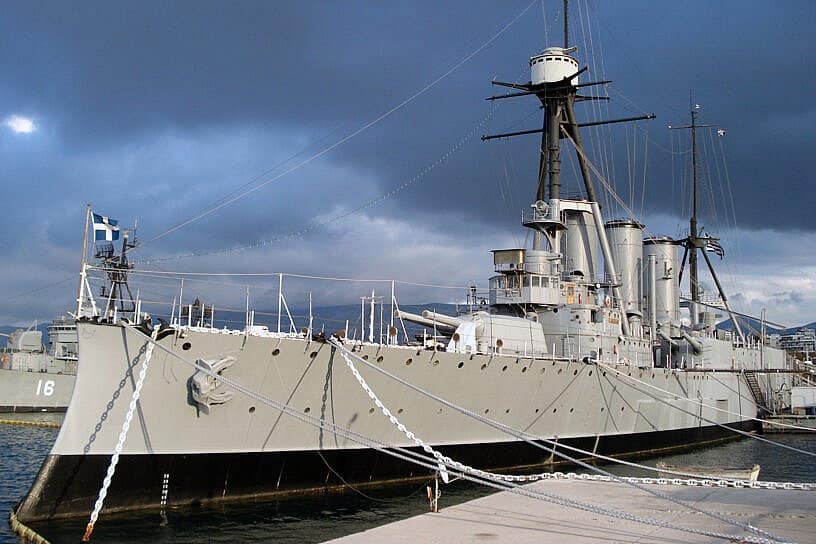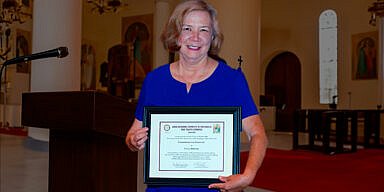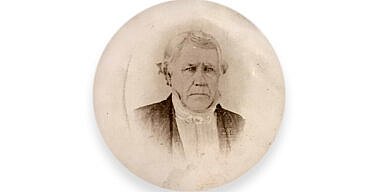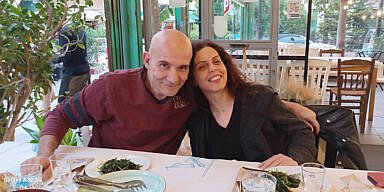My father took me to see her as I was a young boy on one of our many summer trips to Greece. He recalled getting basic naval training on her decks as a naval draftee during the Greek Civil War. Like any Greek naval veteran, and a Hydriot no less, his tone was reverential. “This ship, and the rest of the fleet, led by our fellow Hydriot Admiral Kountouriotis, liberated the Aegean Islands.”
Greece has always been a maritime power in all stages of its long history, both naval and commercial. It was the Greeks’ converted merchant ships (again, often as not from Hydra) that brought Greece her freedom in the War of Independence, but as naval tactics and technologies changed, the arms race was something that the poor, credit-challenged Greek state could hardly sustain.
As often is the case (and often enough forgotten), the Diaspora came to the rescue. Born in Metsovo, Georgios Averof grew fabulously wealthy as a merchant in Egypt. He was part of a Greek merchant network that played a low key yet dominant role in the cotton trade, from the American South, to Egypt, the Ottoman Empire, and all the way to India. Averof’s will contained a subscription for use by the Hellenic Navy. Along with other, primarily Diaspora contributors, the funds went to the one third down payment to purchase the Pisa-Class Battlecruiser from the Livorno Shipyards in Italy. The Averof was launched in 1910, and it immediately changed the power balance in the Aegean.
Crewed by some of the best sailors and officers on the planet, the fast, maneuverable and well-armed Averof bested the Turks in two key naval battles, The Battle of Elli and The Battle of Limnos, often moving ahead of the Greek battle line to engage independently, alternatively sinking or inflicting severe damage on several Turkish vessels and effectively bottling the Turkish fleet up in the Dardanelles, leaving the Aegean to the Greeks, who then quickly occupied every Aegean island under Turkish control, to the delight of the islands’ Greek population. The Turks, to this day, have not gotten over this loss, and it would inform much of the Turks’ subsequent policies.
Beyond the islands, the loss of the Aegean to the Greek Navy sealed the fate of the Turkish armies in Epirus, Macedonia, and Thrace, which were facing off against larger Bulgarian, Serbian, and Greek forces bearing down on the Turks on all directions. The Turks had large armies in Asia Minor which could not be directly and quickly deployed in Europe. The Balkan allies scored crushing victories against the Turks and no less an authority than Bulgarian General Slavov made it clear that the Greek Navy’s role in the victories in Macedonia, Epirus, and Thrace was fundamental.
The Turks’ defeat in the First Balkan War changed the calculus of the region forever, and the Diaspora-bought Averof was fundamental to this victory. Notwithstanding the Turks’ brief alliance with Greece and Serbia in the Second Balkan War in 1913 to defeat Bulgaria and regain land lost to Bulgarians in Eastern Thrace, Turkey openly sought revenge against Greece, both against the Greeks of Asia Minor and by sourcing newer, larger battleships for a rematch against the Greek fleet, which had full technical superiority in the region.
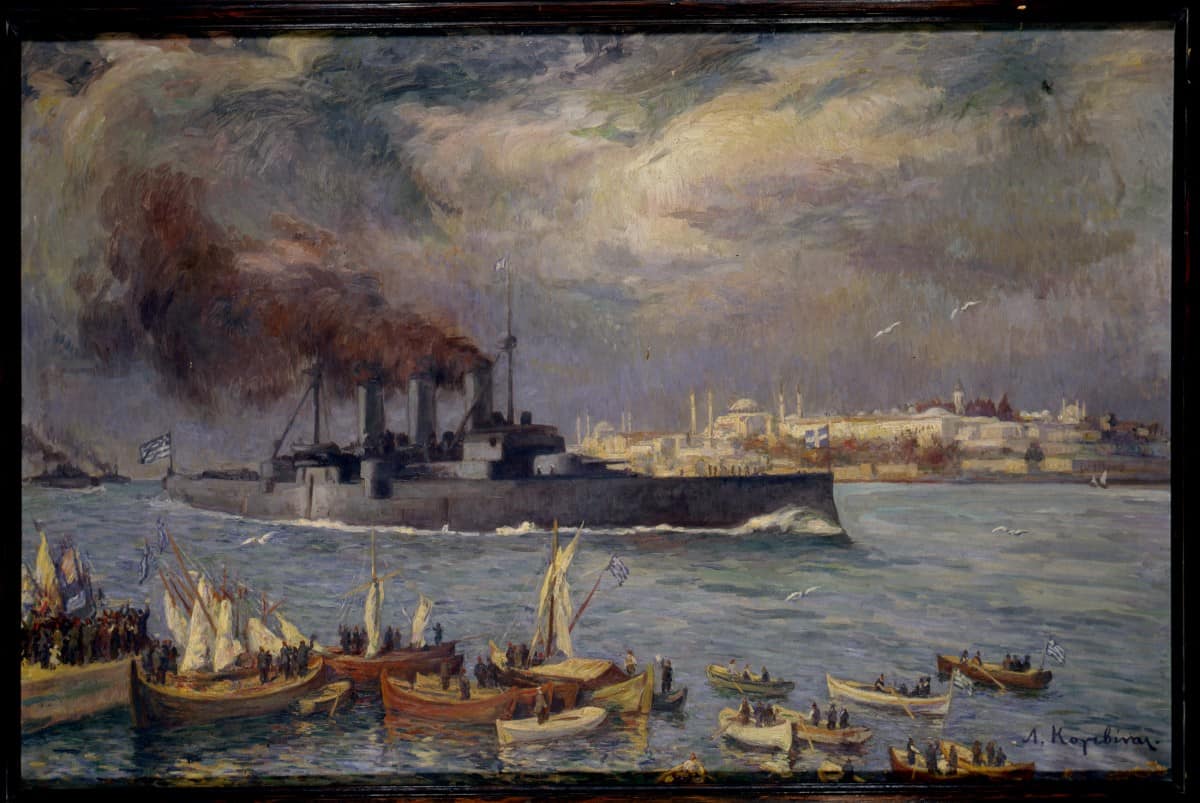
Painting depicting Averof in the Bosporus during the occupation of Constantinople in 1919.
With this in mind, the Turks ordered two Dreadnought Class battleships from Britain, but the outbreak of World War One resulted in the British keeping the ships for their own use. Germany had already begun advising the Ottoman military and proceeded to supplant the British naval role in the Ottoman Empire, even fictitiously putting two first line German naval ships, a battleship and battlecruiser, under nominal Ottoman control. It was these ships, still manned by German crews, that bombarded the Russian Black Sea coast, bringing Turkey into the war on the side of Germany. The pursuit of ships would prove the undoing of the Ottoman Empire. It is also clear that the recapture of the Greek islands was foremost in Ottoman aims, just as it is today.
The Averof would go on to serve her country well in the First World War, the Greek-Turkish War of 1919-1922, and then in the Second World War, though by that time she was well outdated technologically. By the time my late father served on her decks, in 1947, she was a much-loved training ship with the greatest pedigree. After decommissioning, she became, and remains, a museum. Like my father before me, when we lived in Greece, I took my son on the ship.
So, what is the lesson of the Averof? First, the ship is as eternal as Greece herself, a maritime and naval power not just in the last two hundred years but in the Byzantine, the Classical, and the Minoan eras. Second, the ship is a reminder of the patriotism, engagement, and importance of the Greek diaspora, without which there likely would have been no Averof, and perhaps no naval victories. This could have meant the defeat of the Balkan allies in the Balkan Wars, that dozens, rather than only two, Aegean Islands could have been Turkish to this day, and if indeed the Balkan League had been successful, Thessaloniki today might have been Bulgarian. It all too easily could have happened. Speaking of Diaspora, let us not forget the nearly fifty thousand Greeks from America who fought in the Balkan Wars. Third, even though the Aegean Islands are Greek for four millennia, the Turks never have been reconciled to their loss. This requires newer manifestations of Averofs, and a continuing engaged Greek people, state, and Diaspora.
